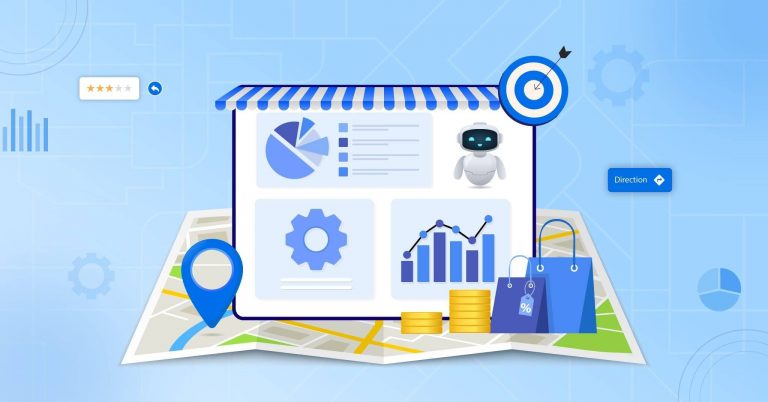When people search locally, they often act fast. Whether someone is looking for a nearby clinic, a car service centre, or the closest retail outlet, their decision is shaped by what appears on Google Maps.
For multi-location brands, appearing consistently and accurately across the Google Business Map is not optional. It influences customer choices, foot traffic, and ultimately, revenue.
So, how do you evaluate your business’s performance on Google Maps? And how do you improve that visibility at scale? This is where AI-powered insights make a measurable difference.
For most brands with physical locations, Google Maps is the digital front door. It is where potential customers form their first impressions, gather essential information, and decide where to go next.
Your business’s visibility on Google Maps is closely tied to performance metrics, including direction requests, phone calls, and webpage visits. Each of these signals indicates an intent to act, and they often convert at a faster rate than other digital channels.
However, visibility is not guaranteed. The accuracy of business data, consistency across listings, and customer engagement all contribute to whether a location ranks high in local search results.
Many brands assume that a verified listing is enough. In reality, visibility requires ongoing maintenance, regular content updates, and strategic adjustments across every location. If you’re operating from multiple locations, this is a complex task without the right tools and oversight.
The Local Pack is the set of three Google Maps business listings that appear below the map in local search results. These listings are prioritized based on a combination of proximity, relevance, and prominence.
Relevance stems from how well the listing aligns with the user’s query. Prominence includes review volume, star ratings, media updates, and brand recognition. Proximity changes dynamically based on the searcher’s location.
What makes this space competitive is that it is constantly evolving. Even well-known brands can be outranked by smaller competitors with more complete or active listings.
For businesses managing dozens or hundreds of stores, it becomes necessary to optimize and monitor each profile individually. Relying on templates or broad updates does not accurately reflect the local nuances that Google values.
Even experienced teams can miss small but significant issues in listing management. Common visibility gaps include:
Each of these elements affects whether your business appears when it matters. And when you multiply the risk across hundreds of locations, the impact can be substantial.
While setup guides cover the basics, maintaining performance at scale requires a more intelligent approach. But they do not address what it takes to maintain visibility and stay competitive over time.
To stay in the top three, brands need real-time visibility into how each listing is performing, and that’s where AI steps in.
Related Read: Simplify Local Presence Management with AI: Streamline Your Google Business Profile and More

AI-powered insights can audit your entire store network, revealing what is working, what is missing, and what requires attention.
For example, intelligent dashboards can score each location based on factors such as completeness, media freshness, review performance, and keyword alignment. These systems can also surface duplicate listings, detect discrepancies, and monitor competitors in the same geographic area.
This kind of insight is critical for brand and operations teams who need to prioritize their efforts. Rather than fixing listings manually or one at a time, they can focus on the locations with the greatest potential for impact.
Platforms like SingleInterface enable this visibility intelligence through tools such as Presence AI. The platform gives teams centralized control and location-level insights that help improve discoverability across the business.
Related Read: Master Local Search with AI: 7 Transformative Tactics
Improving local visibility starts with consistent, structured actions. Here are the areas that AI and location teams should focus on:
Before diving into optimization, ensure that the basics are covered, like correctly adding your business name and location on Google Maps. For large store chains, this is where automation and centralized tools make the difference.
Choose offerings like SingleInterface, which can help you not only publish and verify listings at scale but also monitor how each one performs against benchmarks.
Your business’s visibility on Google Maps needs active oversight. It is influenced by changing algorithms, user behavior, and the quality of information presented.
As local search becomes more dynamic, brands that apply AI-powered tools to their listing strategy are better equipped to adapt. Instead of reacting to missed opportunities, they can lead with data-backed action.
If you are unsure how your listings are performing or why some locations consistently underperform, a deeper look can reveal the answers.
Book a demo with our team and see how intelligent listing management can drive your business to local growth.